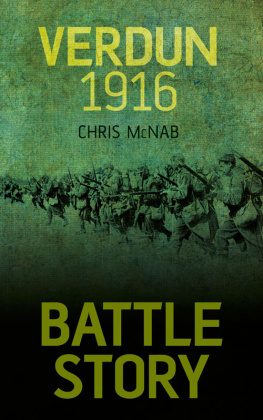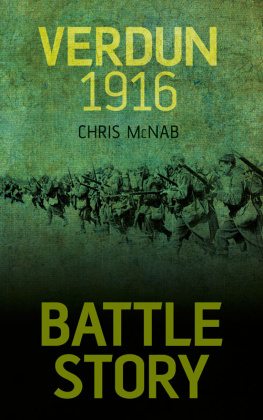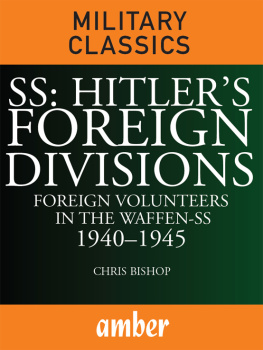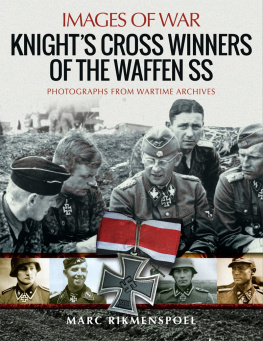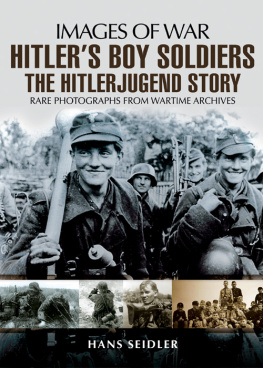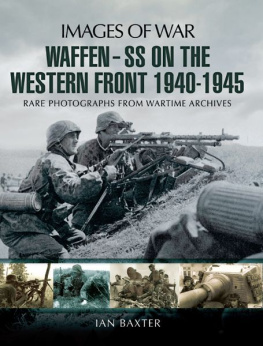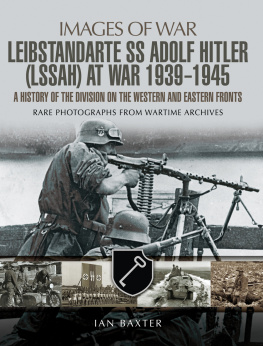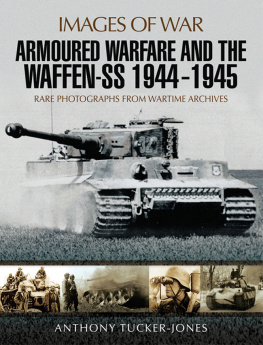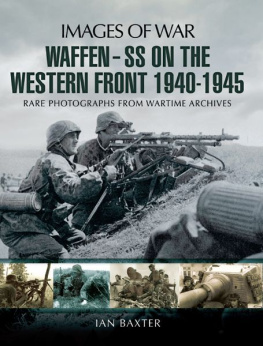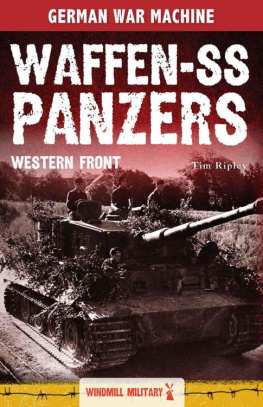HITLERS ELITE
THE SS 193945
EDITED BY
CHRIS McNAB
CONTENTS
Hitler and Rhm march side by side at a rally in 1931, surrounded by men of the Sturmabteilung (SA). The SA would become something of an embarrassment and threat to Hitler, resulting in the 1934 Blood Purge.
INTRODUCTION: ORIGINS AND EVOLUTION OF THE SS
I N 1919, A DOLF H ITLER JOINED THE TINY G ERMAN D EUTSCHE A RBEITERPARTEI (DAP; German Workers Party) in Munich, becoming its leader the following year and adding National Socialist to its title. It was an infamous moment in 20th-century history, as the Nationalsozialistische Deutsche Arbeiterpartei (NSDAP), popularly known as the Nazi Party, was born.
Hitlers fiery brand of politics had found an opportune moment to flower. After four years of appalling slaughter, Germany had been defeated decisively in 1918. Kaiser Wilhelm II abdicated just days before the Armistice was signed and a left-wing government took over the country. This new government was obliged to sign what many Germans, at least, perceived to be an unfair Diktat masquerading as a peace settlement. The Treaty of Versailles that formally brought the war to an end was a controversial settlement, and a catalyst for future conflict. The treaty laid the blame for starting the war squarely upon Germany, saddled it with enormous reparations payments and also took away large areas of German territory, in many cases creating new states.
All of these considerations would have a bearing on the later outbreak of World War II, although in all probability the failure to implement the treaty adequately was as serious a factor as its provisions. Of particular significance also was the fact that the government that signed the humiliating treaty found itself being blamed for doing so, when in reality it had little choice. The Social Democrats were also criticized for the German capitulation many right-wingers and particularly the army considered that the German people had not been defeated, but rather had been stabbed in the back by the government. This myth gained widespread credence in Germany during the inter-war years, and Hitler more than capitalized upon the grievance.
In the early years after the war, Germany suffered along with most of the continent and political extremism was rife. The new German republic was established in the small town of Weimar, later to become famous for its proximity to the Buchenwald concentration camp. Hence this period of German history, the first ever of genuine German democracy, is known as the Weimar Republic. Weimar was chosen in preference to Berlin as the site of the new government because of Berlins associations with Prussian militarism.
Berlin itself was a testing place to be in the early years after World War I, and politics was a thuggish affair. The Weimar government was assailed from both sides of the political spectrum. Extremists fought in many large German cities and occasional attempts were made by left and right to overthrow the government; the insurrection led by Wolfgang Kapp (known as the Kapp Putsch) in March 1920 was one of the most serious. The constitutional system that underpinned the Weimar government also complicated matters. The system was so representative of political opinion that it produced only minority governments or fragile coalitions that had little opportunity to achieve anything. Meanwhile, international tensions rose when Germany suspended its reparations payments, as a result of which the French, eager to draw every pfennig from the Germans, occupied the Ruhr region in 1923. These international concerns were exacerbated by soaring inflation, with the German mark being traded at 10,000 million to the pound.
Amidst all this social, economic and political turbulence, one radical among many was making a name for himself. Adolf Hitler, an Austrian by birth, had served in the German Army throughout World War I. In 1923 Hitler, who had become leader of the NSDAP by virtue of his personal dynamism and skills of oratory, organized his first clumsy attempt to seize power. However, the Munich Putsch, on 9 November 1923, was a failure and earned him five years in Landsberg prison.
Despite the sentence, Hitler served only nine months in rather plush conditions. The authorities, many of whom had some sympathy for Hitlers position, were persuaded to release him early, after Hitler temporarily resigned the leadership of the Nazi Party and agreed to refrain from addressing public meetings on political issues. However, Hitler neatly circumvented these restrictions by moving his meetings into the private homes of his wealthier supporters.
While Hitler was in jail, dictating his memoirs and thoughts, later to be published as Mein Kampf, the situation in Germany improved considerably. A new scheme, the Dawes Plan, was accepted to reschedule Germanys repayments, which now reflected more closely Germanys ability to pay. It also allowed Germany to borrow substantially, mainly from the United States, and fuelled a brief flurry of credit-induced economic prosperity. Germany later ratified a more comprehensive restructuring of the payments in the Young Plan, which further improved her economic situation.
Similarly, the efforts of a new Chancellor, Gustav Stresemann, led to Germany entering the League of Nations in 1926 and signing the Treaty of Locarno with Britain and France, which helped to thaw the international situation. This treaty confirmed the existing borders of the participating states of Western Europe. The prevailing feeling of reconciliation appeared to usher in a more constructive period of international relations. Importantly, however, Locarno failed to guarantee the frontiers of Germany in the east, suggesting to many in Germany that the Western powers would not be as concerned if Germany were to attempt to reclaim lost territory there. Unfortunately, the improvements in Germanys position by 1929 were undone totally by an unforeseen event that would have tremendous ramifications for the world at large. On 29 October 1929 came the Wall Street crash. The immediate effect was that all the American loans that had been artificially buoying up the world economy were recalled. The broader effects on the global economy were dramatic enough, but Germany, whose tenuous economic recovery had been sustained by extensive borrowing from the United States, was among the hardest hit. This new round of economic hardship gave Hitler another opportunity to make political capital, and he seized it with both hands.

Early National Socialist paramilitaries. Here we see, from left to right, a Freikorps trooper, a squad leader from the Stosstrupp Adolf Hitler and an SS-Mann, c. 1925. The central figure depicts Karl Fiehler, one of the founder members of the Stosstrupp Adolf Hitler, carrying the Imperial War Flag as he appeared at the German Day rally in Bayreuth on 2 September 1923. His uniform is basically Reichswehr in character, but features an early hand-made Kampfbinde of the NSDAP on the left sleeve, and a Prussian-style Totenkopf and national cockade on the Austrian army-pattern cap. By the end of 1925, SS men were wearing the recently adopted plain brownshirt uniform of the SA, but with several distinctive accoutrements. The SS was now set apart not only by the





